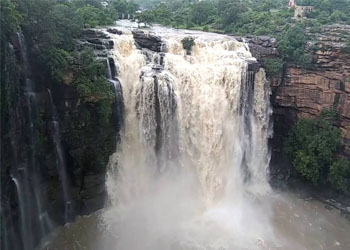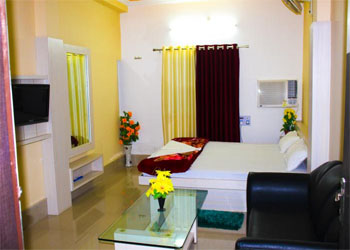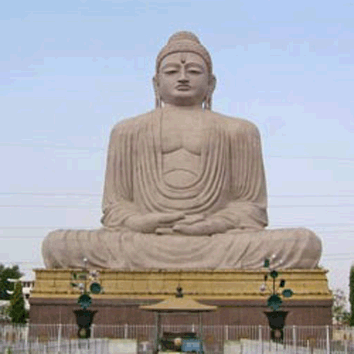Amid the Vedic age, Sasaram was a piece of the antiquated Kashi kingdom. Sasaram name is begun from the Sahastraram. Amid old times,king sahastrabahu governed over the area including the present Sasaram. The Brahmin warrior, Parsuram battled with sahastrabahu in Sasaram. After the war was finished, the place was named by the initials of sahastrabahu and the remainder of Parsuram, consequently the name - sahastra + smash, making the name as Sahastraram. Sasaram was initially named Shah Serai (signifying "Place of King") as it is the origin of the Afghan lord Sher Shah Suri, who controlled over Delhi, a lot of northern India, what is currently Pakistan, and eastern Afghanistan for a long time, in the wake of crushing the Mughal Emperor Humayun. Huge numbers of Sher Shah Suri's legislative practices were embraced by the Mughals and the British Raj including tax collection, organization, and the working of a cleared street from Kabul to Bengal.
Sher Shah Suri's 122 feet (37 m) red sandstone tomb, worked in the Indo-Afghan style remains amidst a fake lake at Sasaram. It gets intensely from the Lodhi style, and was once shrouded in blue and yellow coated tiles showing an Iranian impact. The monstrous unattached arch likewise has a tasteful part of the Buddhist stupa style of the Mauryan time frame. The tomb of Sher Shah's dad Hasan Khan Suri is additionally at Sasaram, and stands amidst a green field at Sherganj, which is known as Sukha Rauza. About a kilometer toward the north west of Sher Shah's tomb lies the deficient and weather beaten tomb of his child and successor, Islam Shah Suri. Sasaram likewise has a baulia, a pool utilized by the head's consorts for showering.
Tourism in Sasaram
The stronghold of Sher Shah Suri at Rohtasgarh is in Sasaram. This fortress has a history going back to the seventh century AD. It was worked by Raja Harishchandra for the sake of his child Rohitashwa, child of famous lord Harishchandra, known for his honesty. It houses the Churasan sanctuary, Ganesh sanctuary, diwan-e khas, diwan-e-aam, and different structures going back to various hundreds of years. The fortification additionally filled in as the base camp of Raja Man Singh amid his rule as the legislative leader of Bihar and Bengal under the routine of Akbar. The Rohtaas fortress in Bihar ought not be mistaken for another fortification of a similar name, close Jhelum, Punjab, in what is currently Pakistan. The Rohtaas fortress in Sasaram was likewise worked by Sher Shah Suri, amid the period when Humayun was ousted from Hindustan.
There is a sanctuary of Goddess Tarachandi, two miles toward the south, and an engraving of Pratap Dhawal on the stone near the sanctuary of Chandi Devi. Hindus in expansive number gather to venerate the goddess. Dhuwan Kund, situated around 36 km. Gupta Dham is additionally a vacationer goal and religious place, arranged in the Chenari Block of this area. This place is a well known focus of Shiva-Aradhana. Hindus in extensive numbers amass here to adore the Lord Shiva. The two cascades have enough ability to create 50-100 MW of power, whenever used properly.
.
There are a few landmarks close Sasaram, the headquarter of Rohtas area, including Akbarpur, Deomarkandey, Rohtas Garh, Shergarh, TaraChandi, Dhuwan Kund, Gupta Dham, Bhaluni Dham, Historical Gurudwara and Tombs of Chandan Shaheed, Hasan Khan Sur, Sher Shah, Salim Sah and Alawal Khan.
Rohtas, south of Sasaram, is known to have been the home of one Satyawadi Raja Harischandra, named for his child, Rohitashwa.
Samadhi of Shree 1008 Shree Swami Parmeshwara Nand Ji Maharaj, otherwise called Adwait Ashram, Dakshin Kutia, arranged in Parampuri (Raipur Chaur) 12 kilometers (7.5 mi) from Sasaram. Adwait Ashram has around 24 branches over the nation in numerous states. The home office is in Sasaram, and is otherwise called Navlakha Ashram.




















